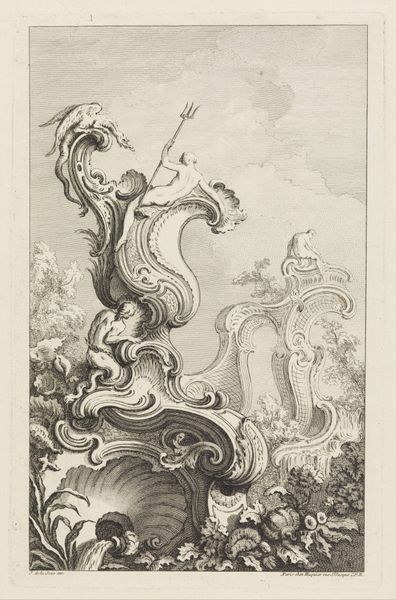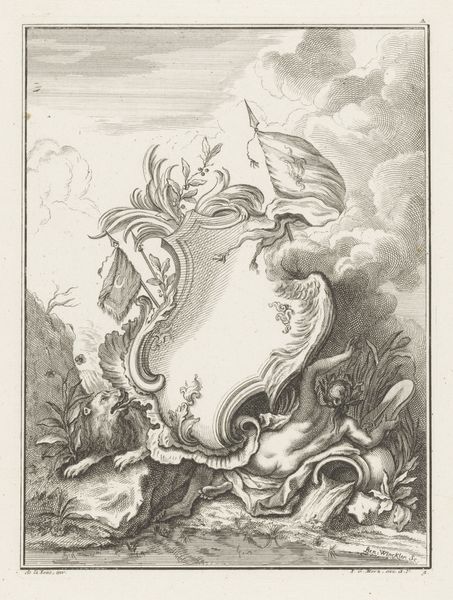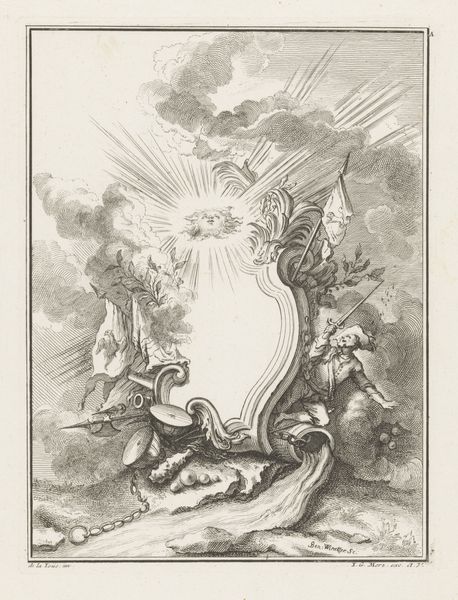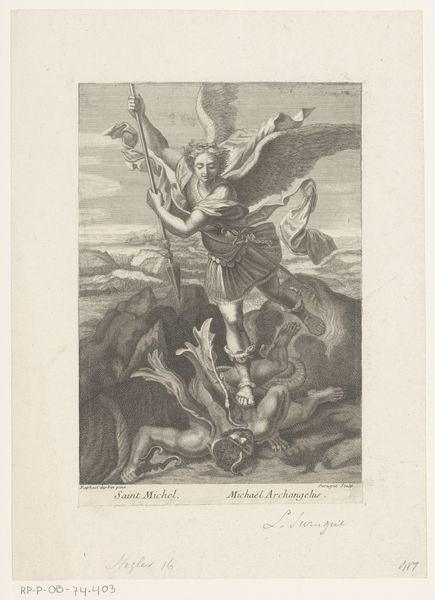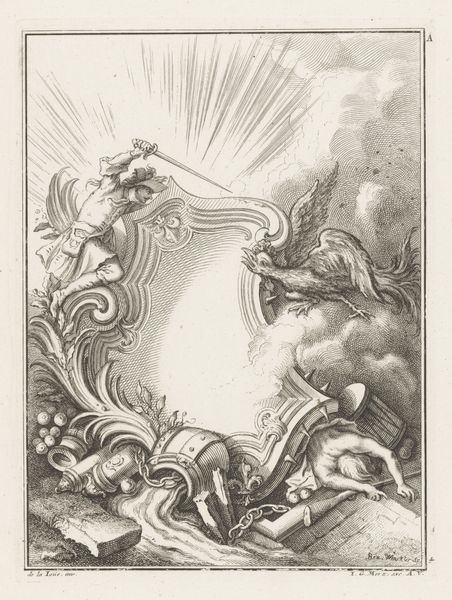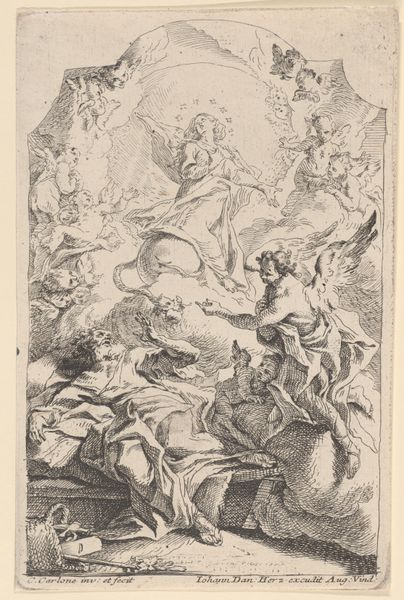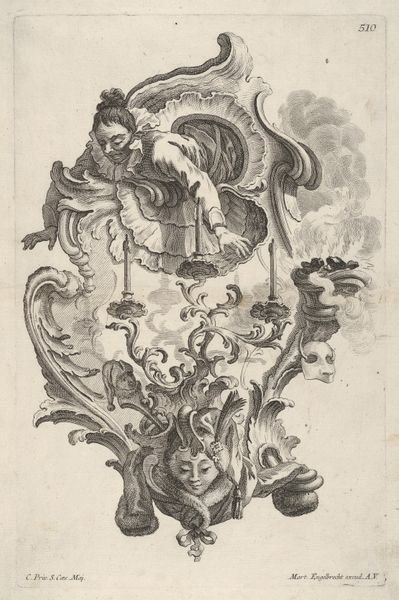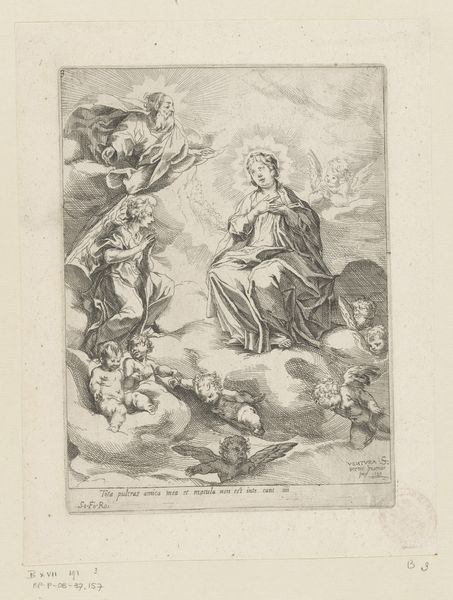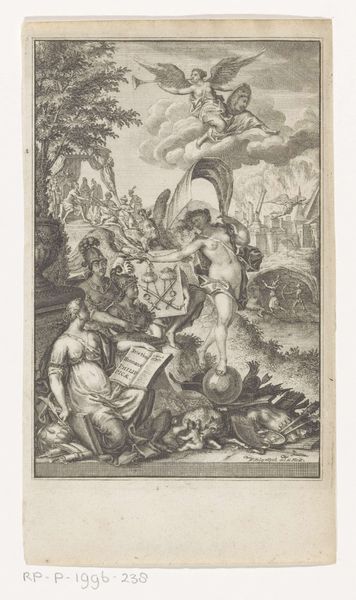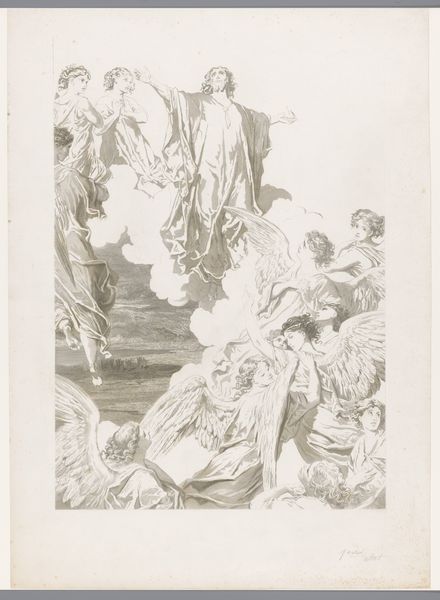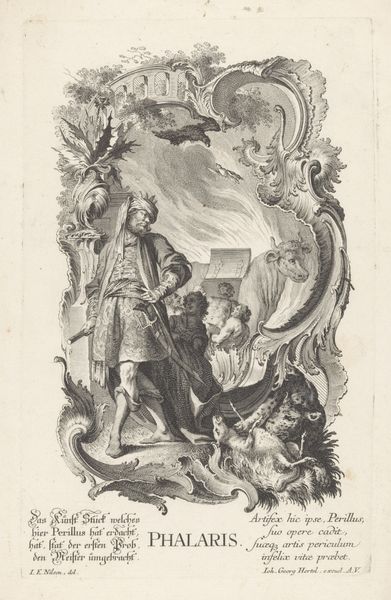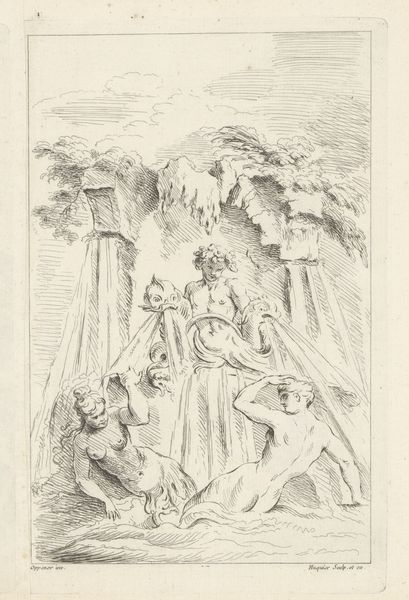
engraving
#
pen sketch
#
figuration
#
line
#
history-painting
#
engraving
#
rococo
Dimensions: height 228 mm, width 172 mm
Copyright: Rijks Museum: Open Domain
Curator: This engraving from between 1736 and 1762, currently held at the Rijksmuseum, presents a fascinating study in Rococo style, with an unknown artist depicting "Man en vrouw op rocaille." Editor: Well, my first thought is: what a whimsical perch! The figures atop that ornate swirl look like they're about to set sail on a confectionary wave. It has this almost playful absurdity. Curator: That "confectionary wave" you speak of is the rocaille—a quintessential element of the Rococo, mirroring a lighthearted retreat from the formal constraints dominant in preceding eras. Observe the delicate lines; the engraver beautifully captures its intricate detail. Editor: You’re right, the craftsmanship is remarkable, it's amazing how they created all those small features by hand, I can feel the labor and energy. And while you're noting societal shifts, that sun bursting forth certainly looks like a sign of optimism, maybe of new ideas emerging! Curator: It very well could. Historians have long discussed the Rococo as an artistic representation of emerging bourgeois culture. Here, the sun may not solely symbolize divinity but potentially, the Enlightenment—an appeal to reason that was so important at the time. Note also how the subjects' dress aligns with upper-class fashions of the period, broadcasting social status. Editor: I’m struck by how that man stares, like a figurehead guiding a vessel. Does this couple stand for something bigger, I wonder? That swirling design at the bottom might speak of societal tides or maybe emotional upheavals bubbling underneath all the glamour. Curator: These sorts of works indeed functioned as a medium to both reflect and subtly reinforce existing class hierarchies. To see their presentation against natural features and bright celestial events certainly infers a harmony between social status and a more powerful divine order, a political narrative as it is much an aesthetic one. Editor: Right, but for all its formal context, can’t we enjoy this scene simply for its fanciful beauty? Its balance, the dance of the lines, that sun. It does uplift something in me, even without a Ph.D. Curator: Indeed! Thank you, your poetic insight invites us to reconcile how the echoes of history shape our own personal experiences when face-to-face with a work such as this one. Editor: Agreed! Art is best when it gets your wheels turning and then lets your feelings take over. Thanks for unraveling a slice of history with me.
Comments
No comments
Be the first to comment and join the conversation on the ultimate creative platform.
